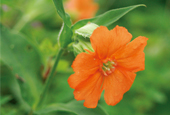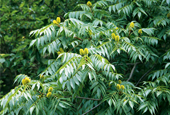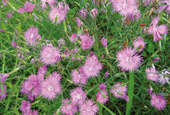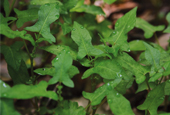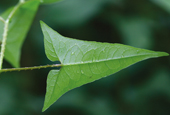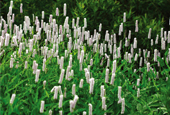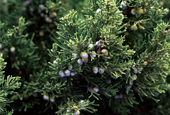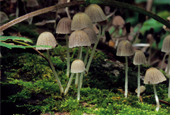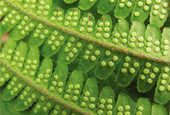-
 Korea.net's 24-hour YouTube channel
Korea.net's 24-hour YouTube channel- NEWS FOCUS
- ABOUT KOREA
- EVENTS
- RESOURCES
- GOVERNMENT
- ABOUT US
View this article in another language
- 한국어
- English
- 日本語
- 中文
- العربية
- Español
- Français
- Deutsch
- Pусский
- Tiếng Việt
- Indonesian
Flora and Fauna of Korea #17
Korea.net publishes a series of articles, “Nature You Meet in the Mountains,” about the peninsula’s mushrooms, insects, trees and herbs & flowers.
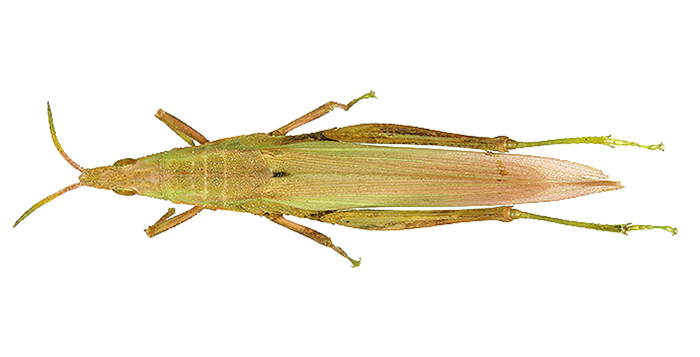
Insects
Name: 섬서구메뚜기 Seomseogu maettugi
Scientific name: Atractomorpha lata (Motschulsky)
Distribution: Korea, China, Japan, Taiwan
This grasshopper is normally about 28 to 42 millimeters long. It is small and light green. Females are much larger than the males. It has a cone-shaped head, the top edge of which is a little longer than the length of its compound eyes. The head becomes narrower toward the top, but it is not pointed. A long longitudinal line stretches along the back, broken by three horizontal stripes at the back of the head. The antenna look like swords. The frontal thorax is long, flat, wide and becomes even wider toward the bottom. The parapsis is formed at the lower part of the body. The front wings are slender and sharpen toward the end. The bottom half of the hind wings are light yellow. The hind legs are slender and long enough to reach its tail.
Ecology: Adults can be seen from June to November around rice paddies and grasses, their main source of food. Males are so small that they look like a baby riding on the back of the mother when copulating.
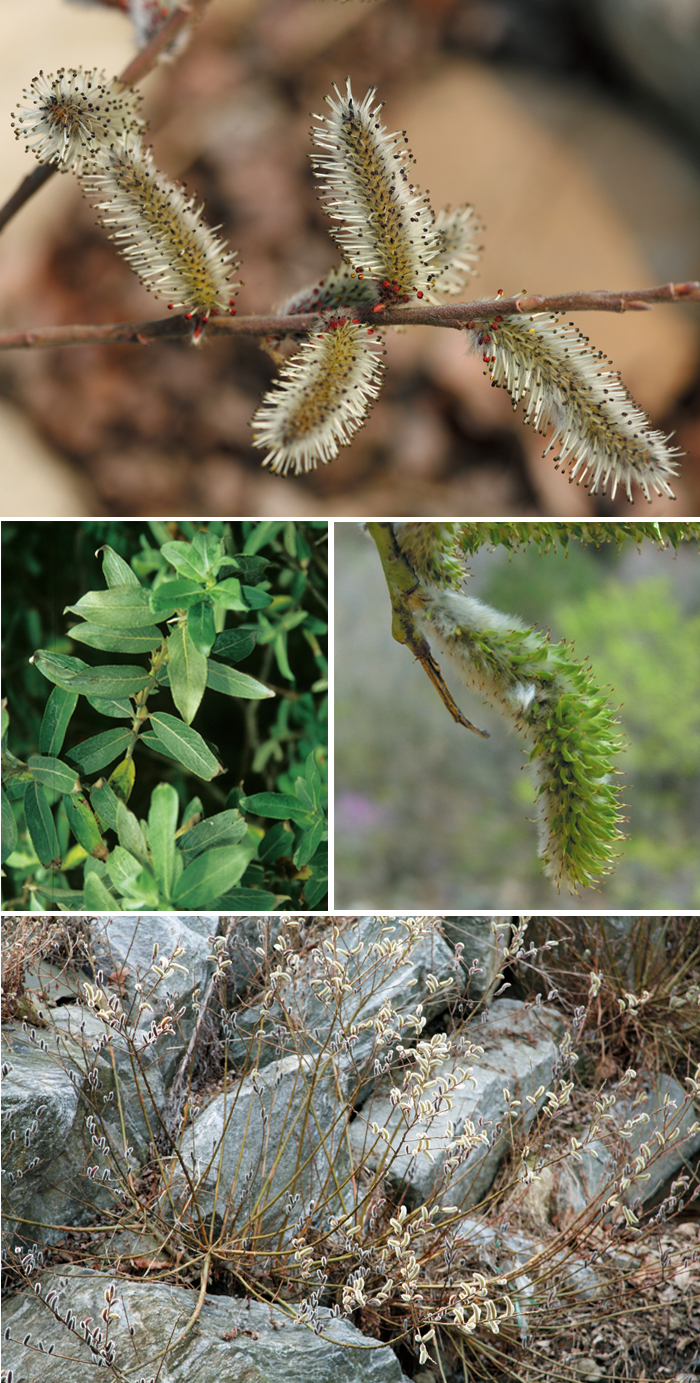
Trees
Name: 갯버들/ 솜털버들 Somteol beodeul
Scientific name: Salix gracilistyla Miq.
Type: deciduous broadleaf shrubs
Blooming season: March to April
Bearing season: April to June
Distribution: mountains nationwide
This tree grows 2 to 3 meters tall. Many branches come from the roots of the tree. Young branches are yellowish green. The leaves are alternated, oblanceolate, or widely lanceolate, and become narrow toward the tip. The underside of the leaves are densely covered with villus. This dioecious tree gives bloom to a flower before the leaf grows in the same spot where it came out in previous year. Male flowers are black and female flowers are red. It bears an oval-shaped capsule fruit. It is often found in gardens for decoration purposes.
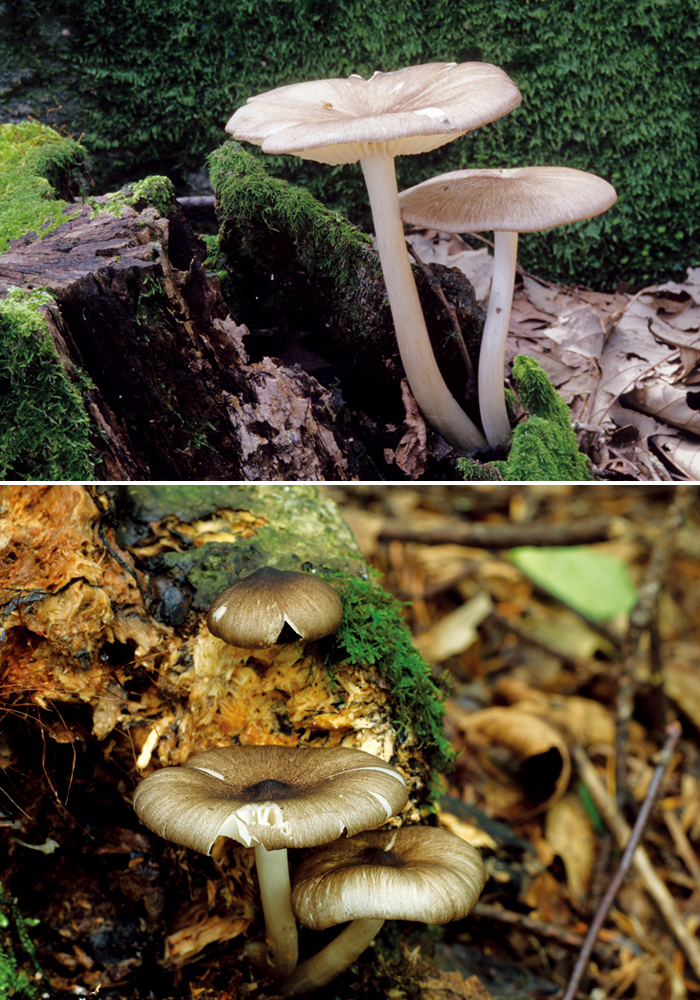
Mushrooms
Name: 넓은솔버섯 Neolbeunsol beoseot
Scientific name: Megacollybia platyphylla (Pers.) Kotl. & Pouzar
Type: saprophile spore
Print: white
Dangerous to eat
This fungus grows in clusters from stumps and branches of fallen or dead trees. The cap is about 5 to 15 centimeters around. It is originally semi-spherical and gradually widens, with the center part slightly dented. It can be gray, grayish brown or black brown with a spoke pattern. The tissue is white. The pleats are white and wispy. The stipes are about 7 to 12 centimeters high and 10 to 20 millimeters around. It is white to gray, fibrous and has rhizomorphs, root-like structures found at the base.
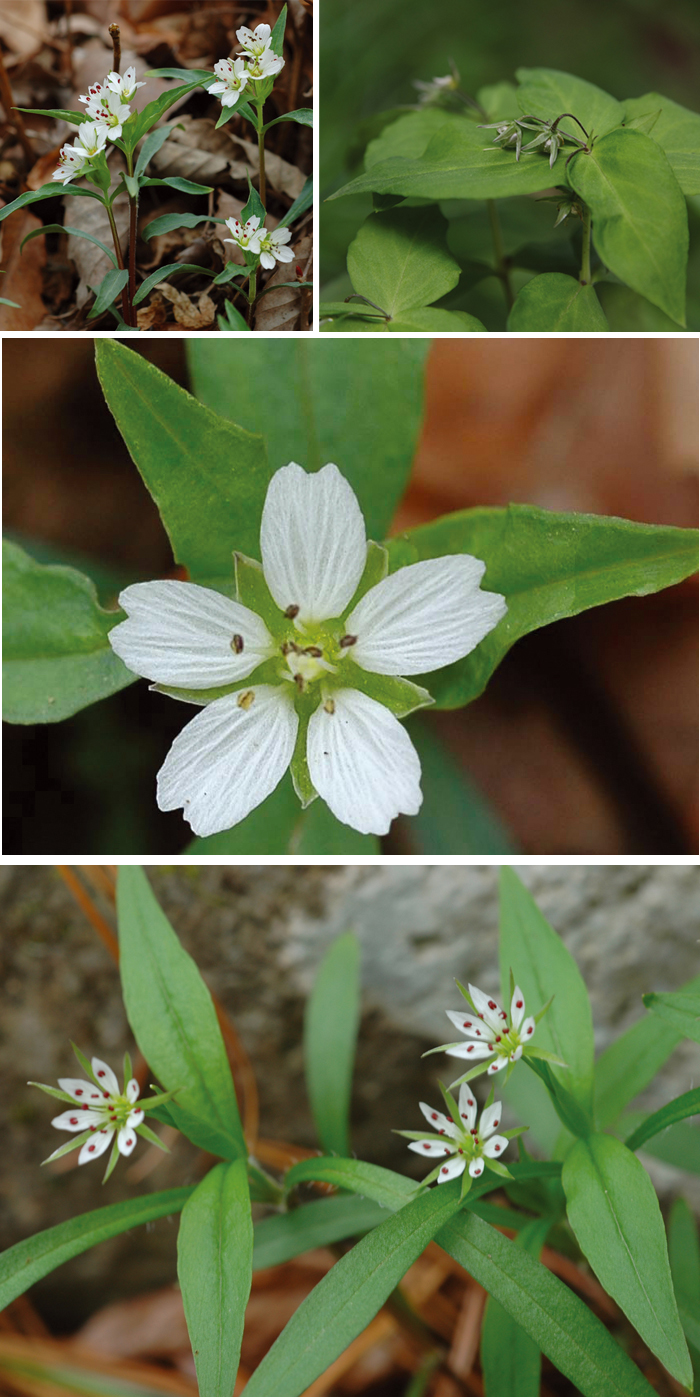
Herbs & Flowers
Name: 개별꽃 Gaebyeolggot
Scientific name: Pseudostellaria heterophylla (Miq.) Pax ex Pax & Hoffm.
Blooming season: May
Full bloom: May to June
Distribution: mountains nationwide
This perennial grows 8 to 12 centimeters tall. The branches are covered with white hairs. The leaves are opposite each other and are oval-shaped with a pointed end. Four leaves grow from a branch to form a cross. It gives bloom to white flowers, normally one to three of them, facing upward at the tip of the branch. It bears oval-shaped fruit which exposes the seed as it cracks into three parts when matured.
*This series of article about Korea’s insects, trees, mushrooms and herbs & flowers has been made possible through the cooperation of the Korea National Arboretum.
Korea.net publishes a series of articles, “Nature You Meet in the Mountains,” about the peninsula’s mushrooms, insects, trees and herbs & flowers.

Insects
Name: 섬서구메뚜기 Seomseogu maettugi
Scientific name: Atractomorpha lata (Motschulsky)
Distribution: Korea, China, Japan, Taiwan
This grasshopper is normally about 28 to 42 millimeters long. It is small and light green. Females are much larger than the males. It has a cone-shaped head, the top edge of which is a little longer than the length of its compound eyes. The head becomes narrower toward the top, but it is not pointed. A long longitudinal line stretches along the back, broken by three horizontal stripes at the back of the head. The antenna look like swords. The frontal thorax is long, flat, wide and becomes even wider toward the bottom. The parapsis is formed at the lower part of the body. The front wings are slender and sharpen toward the end. The bottom half of the hind wings are light yellow. The hind legs are slender and long enough to reach its tail.
Ecology: Adults can be seen from June to November around rice paddies and grasses, their main source of food. Males are so small that they look like a baby riding on the back of the mother when copulating.

Trees
Name: 갯버들/ 솜털버들 Somteol beodeul
Scientific name: Salix gracilistyla Miq.
Type: deciduous broadleaf shrubs
Blooming season: March to April
Bearing season: April to June
Distribution: mountains nationwide
This tree grows 2 to 3 meters tall. Many branches come from the roots of the tree. Young branches are yellowish green. The leaves are alternated, oblanceolate, or widely lanceolate, and become narrow toward the tip. The underside of the leaves are densely covered with villus. This dioecious tree gives bloom to a flower before the leaf grows in the same spot where it came out in previous year. Male flowers are black and female flowers are red. It bears an oval-shaped capsule fruit. It is often found in gardens for decoration purposes.

Mushrooms
Name: 넓은솔버섯 Neolbeunsol beoseot
Scientific name: Megacollybia platyphylla (Pers.) Kotl. & Pouzar
Type: saprophile spore
Print: white
Dangerous to eat
This fungus grows in clusters from stumps and branches of fallen or dead trees. The cap is about 5 to 15 centimeters around. It is originally semi-spherical and gradually widens, with the center part slightly dented. It can be gray, grayish brown or black brown with a spoke pattern. The tissue is white. The pleats are white and wispy. The stipes are about 7 to 12 centimeters high and 10 to 20 millimeters around. It is white to gray, fibrous and has rhizomorphs, root-like structures found at the base.

Herbs & Flowers
Name: 개별꽃 Gaebyeolggot
Scientific name: Pseudostellaria heterophylla (Miq.) Pax ex Pax & Hoffm.
Blooming season: May
Full bloom: May to June
Distribution: mountains nationwide
This perennial grows 8 to 12 centimeters tall. The branches are covered with white hairs. The leaves are opposite each other and are oval-shaped with a pointed end. Four leaves grow from a branch to form a cross. It gives bloom to white flowers, normally one to three of them, facing upward at the tip of the branch. It bears oval-shaped fruit which exposes the seed as it cracks into three parts when matured.
*This series of article about Korea’s insects, trees, mushrooms and herbs & flowers has been made possible through the cooperation of the Korea National Arboretum.
Related Contents
Most popular
- China warmly welcomes first Korea-born giant panda Fu Bao
- First hearing-impaired K-pop act hopes for 'barrier-free world'
- Novelist Hwang's 'Mater 2-10' shortlisted for Int'l Booker Prize
- Expats could account for 7% of population in 20 years: report
- Nat'l Fire Agency picks 137 elite staff for deployment abroad









